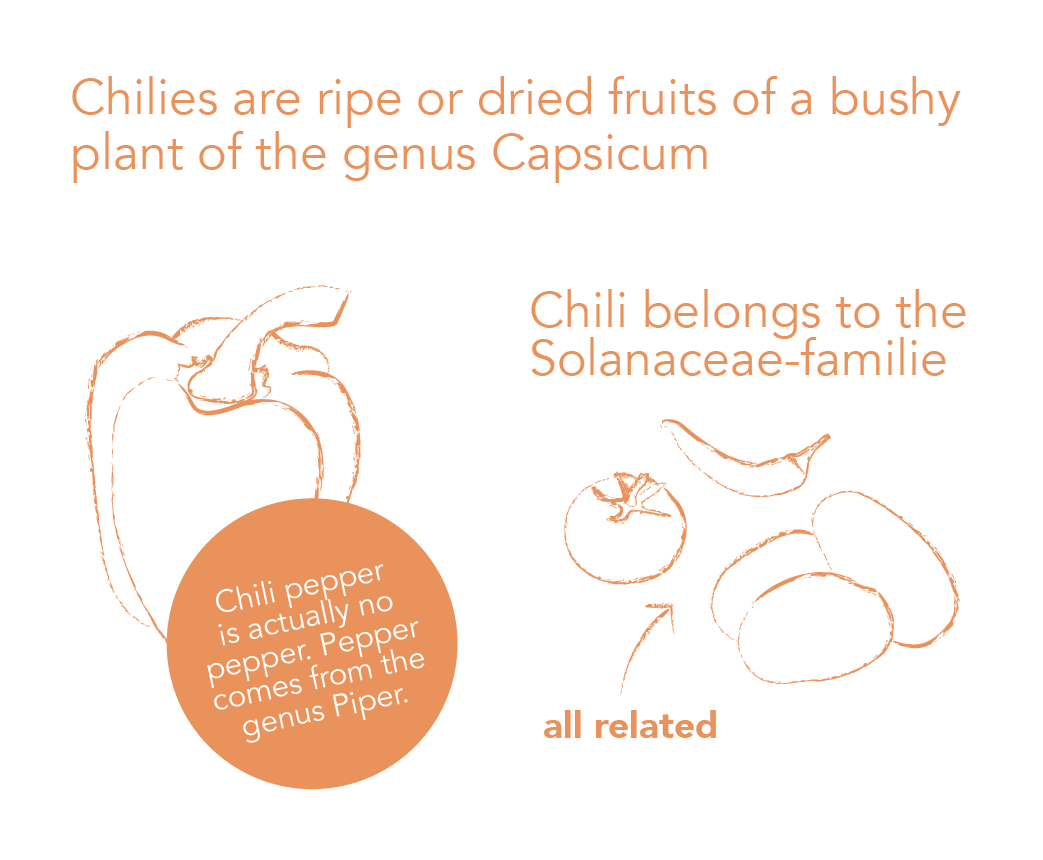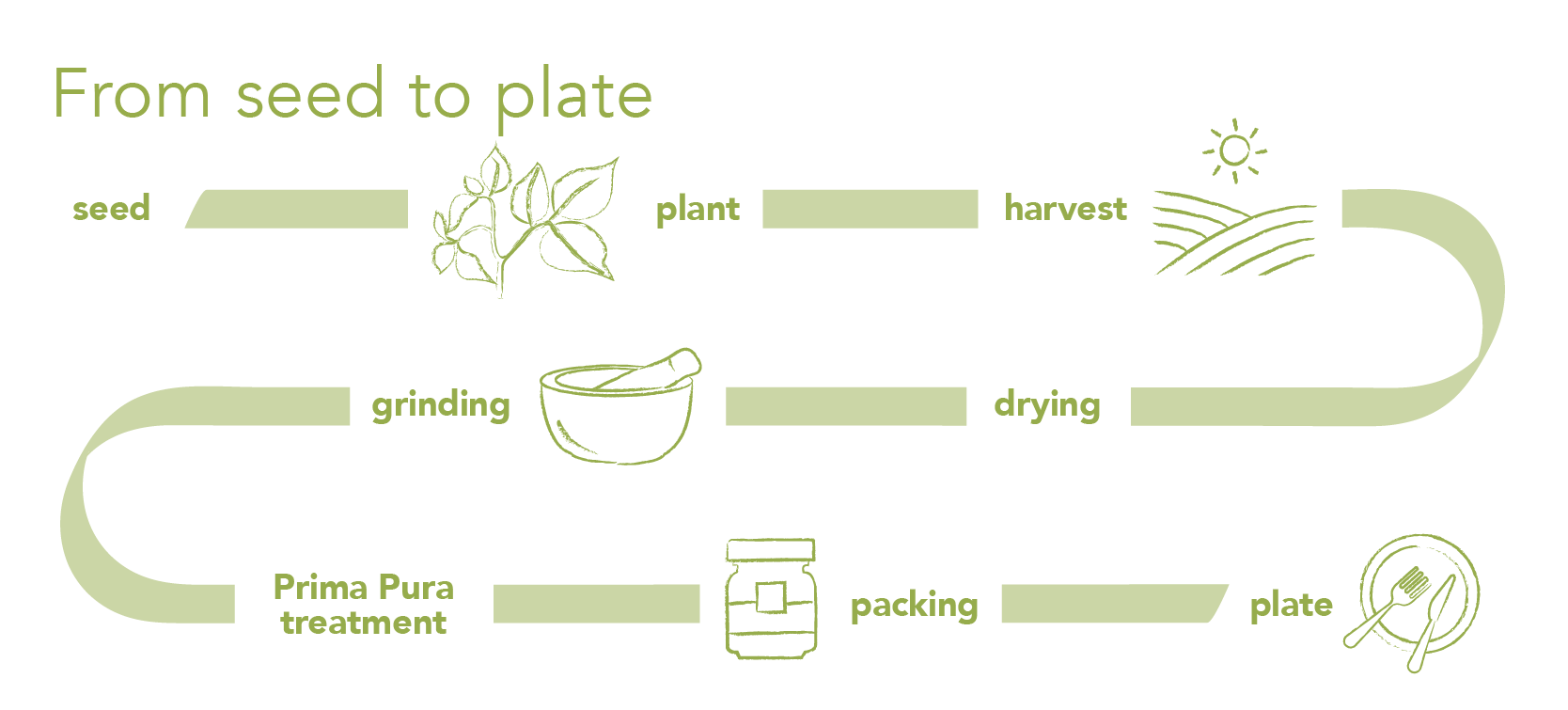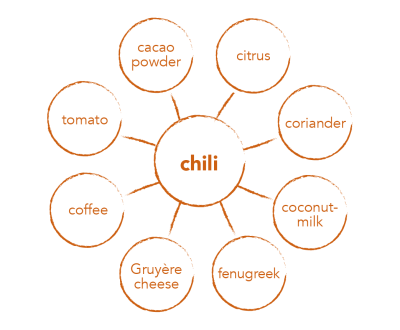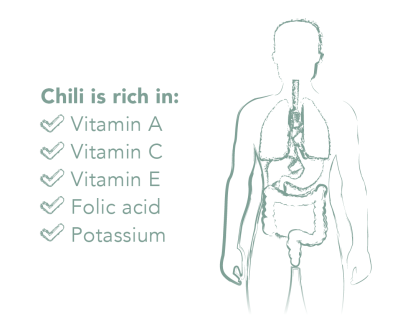All about Chilli
Chilli is hot – in more ways than one! Consumers are looking for exciting flavour combinations and a fiery spice like chilli is just the thing to give everyday foods an exhilarating twist and intense taste – plus it can help reduce sodium in a diet. So, what do you know about chilli?
Chilli powder is produced from chilli peppers.  Like sweet peppers, these fruits originate in the New World and belong to the genus Capsicum. They were called peppers by the Europeans who discovered them because they used this term for any spicy foods at the time – however, common black, white and green pepper is coming from plants belonging to the genus Piper, which Europeans received from South and Southeast Asia.
Like sweet peppers, these fruits originate in the New World and belong to the genus Capsicum. They were called peppers by the Europeans who discovered them because they used this term for any spicy foods at the time – however, common black, white and green pepper is coming from plants belonging to the genus Piper, which Europeans received from South and Southeast Asia.
There are dozens, perhaps hundreds, of different chilli plants: from the household names cayenne pepper and jalapeño to the less well-known guajillo. Each variety has its own range of spiciness, which is generally measured in so-called Scoville Heat Units, or SHUs.

Origin and harvest time of chilli
The largest producers of chilli are India, China, Nigeria, Malawi and Mexico. This wide range of origins means that chilli is always harvested somewhere in the world.

From seed to plate
Chilli travels a long way before reaching our plates in Europe. The chilli plant is grown in dry environments and is sensitive to moisture. Irrigation – from springs, lakes and rivers – is only necessary in exceptional situations. Some three to five months after the seeds are planted, the peppers are harvested, making sure to keep a small green stem attached to each fruit to prevent them from losing their seeds. The peppers are then dried completely, while the green stem is removed just before grinding. After the chilis have been dried out and ground, steam treatment is used to ensure a food safe product for further processing into delicious foods.

The taste of chilli
Chilli adds intensity and spiciness to dishes thanks to the substance capsaicin – but in excess amounts it may be too much of a good thing, leading to an unpleasant and painful sensation for people who are not used to it.
The chemical structure of capsaicin includes a long hydrophobic tail, which causes it to bind strongly to protein receptors on the tongue. Its taste is therefore experienced as more penetrating, and cannot be counteracted with water (capsaicin oil and water do not mix) – it is better to use milk, as dairy contains proteins and fat globules in which capsaicin can be dispersed.
Are you looking to create unique flavour combinations? Principles of food pairing – which combines different foods based on smells and aroma profiles – suggest that chilli is complementary with cocoa powder, citrus, coriander, coconut milk, Gruyère cheese, coffee, tomato and fenugreek.

Chilli and health
Chilli is rich in vitamins A, C and E, folic acid and potassium. Studies show that the capsaicin in chilli stimulates the digestive process and blood circulation. It also induces perspiration, which has a cooling effect on the body. While capsaicin is said to contribute to pain relief in conditions such as rheumatism and neuralgia, this has yet to be scientifically proven.

The sustainability of chilli
Euroma strives for the sustainable cultivation of chili peppers. Farmers are trained locally in sustainable cultivation and given advice on alternatives to chemical pesticides in order to preserve biodiversity. They also learn how to use irrigation techniques so that savings can be made on water consumption. Last but not least, growers are educated about the circular economy and how to apply these principles themselves.
Free Factsheet
Like to have this chilli info in one place for future reference?
